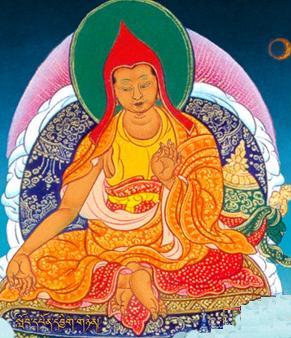Vasubandhu: Difference between revisions
Jump to navigation
Jump to search
No edit summary |
mNo edit summary |
||
| Line 5: | Line 5: | ||
==External Links== | ==External Links== | ||
*[http://www. | *[http://www.lotsawaschool.org/vasubandhu_quotes.html Important quotes from Vasubandhu's writings] | ||
[[Category:Historical Masters]] | [[Category:Historical Masters]] | ||
[[Category:Seventeen Nalanda Masters]] | [[Category:Seventeen Nalanda Masters]] | ||
Revision as of 06:20, 22 May 2008

Vasubandhu (Tib. Yiknyen; dbyig gnyen) numbers among the ‘Six Ornaments’, the greatest Buddhist authorities of Ancient India. He was the younger brother of Asanga, and composed The Treasury of Abhidharma (Abhidharmakosha [Skt.]), a complete and systematic account of the Abhidharma, the peak of scholarship in the Fundamental Vehicle. Later he followed the Mahayana Yogachara view, and wrote many works, such as Thirty Stanzas on the Mind (Trimsikavijñapti-karika).
His Disciples
He famously had four students who were more learned than himself: Sthiramati, who was more learned in Abhidharma; Dignāga, who was more learned in Pramāṇa; Guṇaprabha, who was more learned in the Vinaya; and Arya Vimuktasena, who was more learned in Prajñāpāramitā.